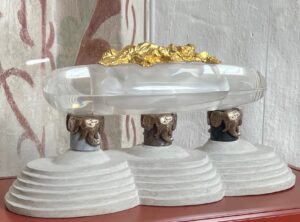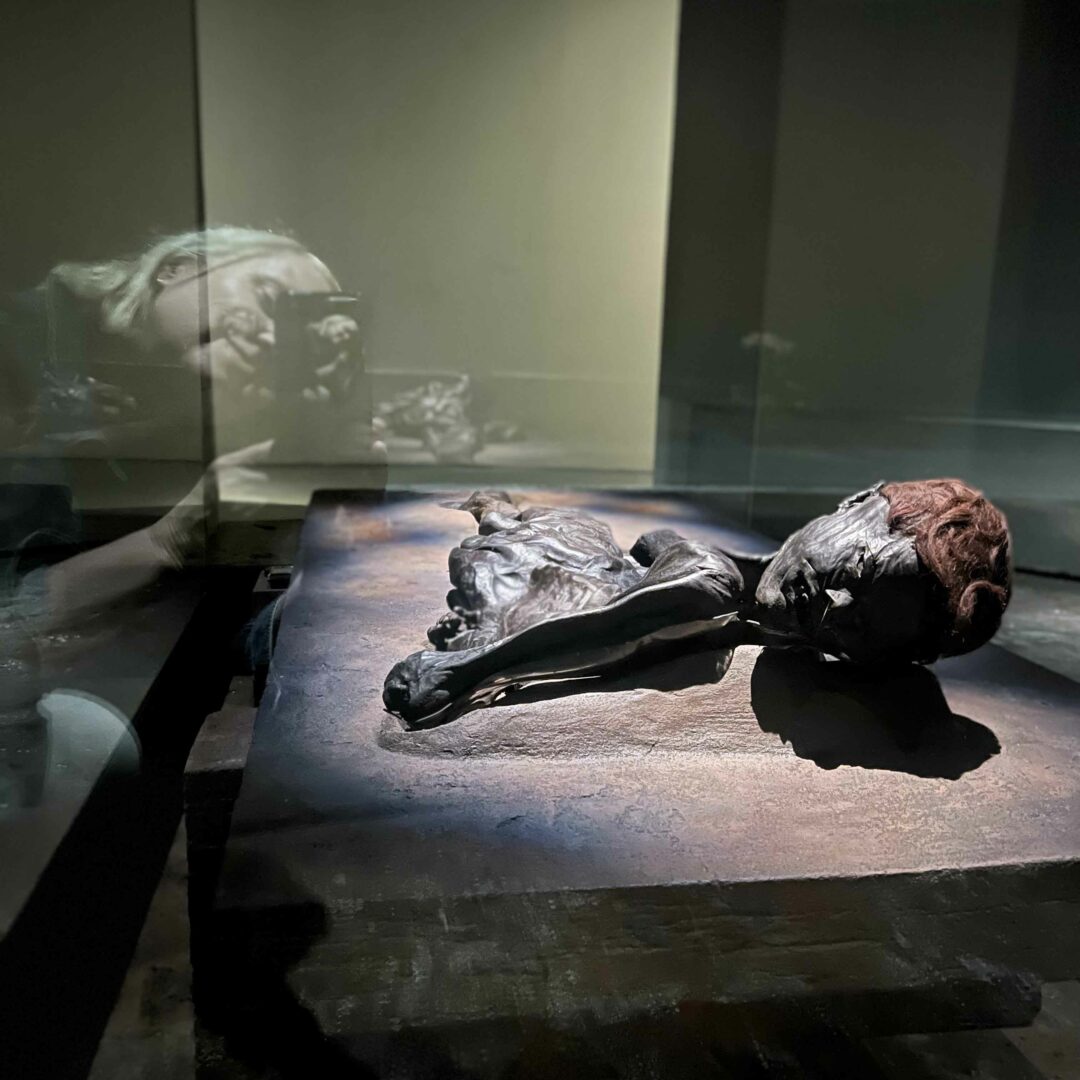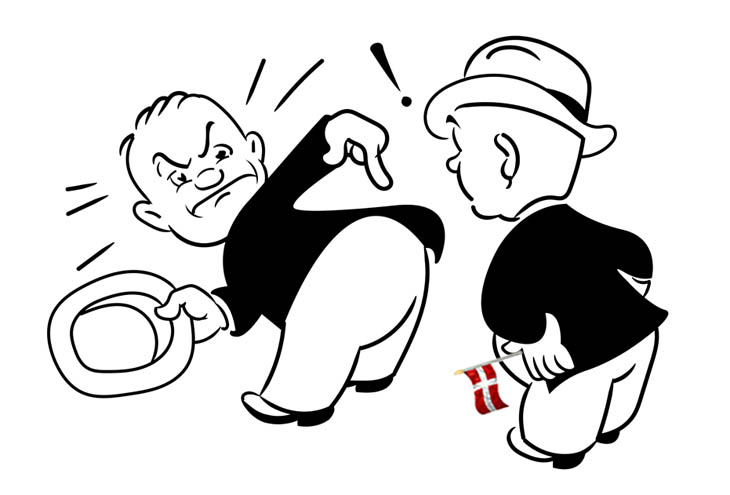Many people who visit Denmark are fans of the Vikings, the familiar name for Scandinavians before the medieval era, although technically speaking the Viking raiders were at their peak in the years 800-1100.
There are plenty of opportunities, especially now during tourist season, to see modern-day Danes dressed up as Vikings, building wooden ships, cooking over open fires, and fighting with swords and shields. Exhibitions like this are very popular with visitors from overseas.
Viking ‘mummies’
What they might not know is that you can see actual Vikings in Denmark, or what’s left of their bodies. It was common in the Viking era and before to toss sacrificial items and people into peat bogs, which, it turns out, preserve bodies and clothing and hair very well.
So there are several places in Denmark where you can see actual humans from the Viking age, more than a thousand years old, and sometimes their clothes and hairstyles, sometimes even the last food they ate, reclaimed from their stomachs.
Some bodies are so well-preserved that they still have fingerprints.
Interactive, overwhelming museum
The top spot for this is near Aarhus, the Moesgaard Museum. It’s a huge museum that’s interactive, immersive, almost overpowering.
You will see hundreds of Viking objects and and weapons and skeletons, amid multimedia exhibits. For example, there’s a room that lets you experience what it was like to be in the middle of a Viking battle, with armed warriors shouting and screaming and running at you from all directions.
It’s overwhelming, because the people it celebrates lived such brutal lives. Sacrificing people, sacrificing animals, killing each other with clubs and daggers and axes to the head in violent raids.
It’s a lot. After a while I found myself cowering in the gift shop.
The man with his throat slashed
The Moesgaard Museum is most famous for Grauballe Man.
Grauballe Man is the best-preserved complete mummy – or “bog man” – in Denmark. Unlike the Egyptian mummies, who were mostly kings and their family members, Grauballe Man was an ordinary guy and possibly a criminal.
When he was found in 1952 he was lying face-down and when the archeologists picked him up, they found his throat had been slashed. So, he could have been a thief being executed, he could have been a human sacrifice, hard to tell. They tell you a story at the museum of him being a victim of a love triangle. I didn’t really buy that.
Grauballe Man has his own little room at the museum with seats surrounding him, and if you get there early enough on a slow day, you can have him to yourself for awhile.
I did. It was thought provoking to spend a little time with my distant cousin, who was laid out on a slab of stone in a glass museum case, his red hair nicely curled, and consider the circular nature of time.
Maybe someday I’ll be the person in the glass museum case.
Female mummy with matching skirt and scarf
Mosegaard is near Aarhus, but if you’re in Copenhagen and would like to see a Danish mummy you can go to the National Museum and check out Huldremose Woman. She was preserved with an entire set of clothing.
She has a wool dress with a plaid skirt, a matching scarf, and a fur cape, which are displayed separately from the actual skeleton. The skeleton does have her hairstyle. She had two blonde braids.
A practical approach to death
Now, some people might feel uncomfortable about putting these human remains on display, but the Danes have a very practical approach to death. They are not superstitious people, they don’t fear talking about death or being near it.
Cemeteries, particularly in big cities, are very popular for picnics or even sunbathing. Hey, these are green areas with lots of trees and flowers. Why not enjoy them? That’s the Danish attitude.
The Queen has her tomb ready when the time comes
The Danish Queen, Margrethe, also has a relaxed and practical attitude towards her own death. She is 83 years old, and she has already designed and constructed her tomb.
All the Danish kings and queens going back to Harold Bluetooth are either buried or have crypts in Roskilde Cathedral. You can go there and visit all the greats – Christian the Fourth, the Master Builder, Christian the Seventh – he was part of a big love triangle, and struggled with mental illness while he was on the throne – or Christian the Tenth, who famously rode his horse around Copenhagen during the Nazi occupation.
Margrethe knows she will end up there someday as well, so she worked with a Danish artist to sculpt a very creative sarcophagus for herself.

Model of Queen Margrethe’s tomb
It is in place and ready to go when the time comes. For the moment it’s covered by a painted wood structure, but next to it you can see a miniature model of the real thing.
It’s made of glowing, non-transparent glass, with metallic elephant heads – the traditional symbol of the Danish Royal Family – and columns made from stone sourced from Denmark, Greenland, and the Faroe islands, all part of the Queen’s kingdom.
Row a boat like a Viking
There are no fancy Viking memorials at Roskilde Cathedral, but a few minutes’ walk away you will find the Viking Ship Museum, where you can see five real Viking ships they dug up from Roskilde Harbor.
You can’t ride in those ships, but nearby the museum is building new square-sail ships in the traditional Viking style.
You can sail out in the water in those ships, you can book a trip, but just like the original Viking sailors, you and your family are going to have to be part of the crew. You’re going to have to row.




